RhoE deficiency produces postnatal lethality, profound motor deficits and neurodevelopmental delay in mice
- PMID: 21552537
- PMCID: PMC3084285
- DOI: 10.1371/journal.pone.0019236
RhoE deficiency produces postnatal lethality, profound motor deficits and neurodevelopmental delay in mice
Abstract
Rnd proteins are a subfamily of Rho GTPases involved in the control of actin cytoskeleton dynamics and other cell functions such as motility, proliferation and survival. Unlike other members of the Rho family, Rnd proteins lack GTPase activity and therefore remain constitutively active. We have recently described that RhoE/Rnd3 is expressed in the Central Nervous System and that it has a role in promoting neurite formation. Despite their possible relevance during development, the role of Rnd proteins in vivo is not known. To get insight into the in vivo function of RhoE we have generated mice lacking RhoE expression by an exon trapping cassette. RhoE null mice (RhoE gt/gt) are smaller at birth, display growth retardation and early postnatal death since only half of RhoE gt/gt mice survive beyond postnatal day (PD) 15 and 100% are dead by PD 29. RhoE gt/gt mice show an abnormal body position with profound motor impairment and impaired performance in most neurobehavioral tests. Null mutant mice are hypoactive, show an immature locomotor pattern and display a significant delay in the appearance of the hindlimb mature responses. Moreover, they perform worse than the control littermates in the wire suspension, vertical climbing and clinging, righting reflex and negative geotaxis tests. Also, RhoE ablation results in a delay of neuromuscular maturation and in a reduction in the number of spinal motor neurons. Finally, RhoE gt/gt mice lack the common peroneal nerve and, consequently, show a complete atrophy of the target muscles. This is the first model to study the in vivo functions of a member of the Rnd subfamily of proteins, revealing the important role of Rnd3/RhoE in the normal development and suggesting the possible involvement of this protein in neurological disorders.
Conflict of interest statement
Figures
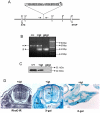
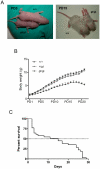
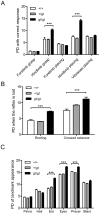

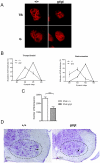
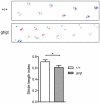
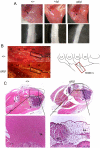
Similar articles
-
Pathophysiological Functions of Rnd3/RhoE.Compr Physiol. 2015 Dec 15;6(1):169-86. doi: 10.1002/cphy.c150018. Compr Physiol. 2015. PMID: 26756630 Free PMC article. Review.
-
Analysis of RhoE expression in the testis, epididymis and ductus deferens, and the effects of its deficiency in mice.J Anat. 2014 Dec;225(6):583-90. doi: 10.1111/joa.12241. Epub 2014 Oct 1. J Anat. 2014. PMID: 25270035 Free PMC article.
-
RhoE deficiency alters postnatal subventricular zone development and the number of calbindin-expressing neurons in the olfactory bulb of mouse.Brain Struct Funct. 2015 Nov;220(6):3113-30. doi: 10.1007/s00429-014-0846-1. Epub 2014 Jul 10. Brain Struct Funct. 2015. PMID: 25009316
-
Rnd3 is necessary for the correct oligodendrocyte differentiation and myelination in the central nervous system.Brain Struct Funct. 2022 Apr;227(3):829-841. doi: 10.1007/s00429-021-02419-0. Epub 2021 Nov 1. Brain Struct Funct. 2022. PMID: 34724108
-
Function and regulation of RhoE.Biochem Soc Trans. 2005 Aug;33(Pt 4):649-51. doi: 10.1042/BST0330649. Biochem Soc Trans. 2005. PMID: 16042565 Review.
Cited by
-
RND3 promotes Snail 1 protein degradation and inhibits glioblastoma cell migration and invasion.Oncotarget. 2016 Dec 13;7(50):82411-82423. doi: 10.18632/oncotarget.12396. Oncotarget. 2016. PMID: 27705942 Free PMC article.
-
Pathophysiological Functions of Rnd3/RhoE.Compr Physiol. 2015 Dec 15;6(1):169-86. doi: 10.1002/cphy.c150018. Compr Physiol. 2015. PMID: 26756630 Free PMC article. Review.
-
Rnd3-induced cell rounding requires interaction with Plexin-B2.J Cell Sci. 2016 Nov 1;129(21):4046-4056. doi: 10.1242/jcs.192211. Epub 2016 Sep 21. J Cell Sci. 2016. PMID: 27656111 Free PMC article.
-
Downregulation of RND3/RhoE in glioblastoma patients promotes tumorigenesis through augmentation of notch transcriptional complex activity.Cancer Med. 2015 Sep;4(9):1404-16. doi: 10.1002/cam4.484. Epub 2015 Jun 24. Cancer Med. 2015. PMID: 26108681 Free PMC article.
-
RhoE is required for contact inhibition and negatively regulates tumor initiation and progression.Oncotarget. 2015 Jul 10;6(19):17479-90. doi: 10.18632/oncotarget.4127. Oncotarget. 2015. PMID: 26036260 Free PMC article.
References
-
- Heasman SJ, Ridley AJ. Mammalian Rho GTPases: new insights into their functions from in vivo studies. Nat Rev Mol Cell Biol. 2008;9:690–701. - PubMed
-
- Jaffe AB, Hall A. Rho GTPases: biochemistry and biology. Annu Rev Cell Dev Biol. 2005;21:247–269. - PubMed
-
- Chardin P. Function and regulation of Rnd proteins. Nat Rev Mol Cell Biol. 2006;7:54–62. - PubMed
-
- Riou P, Villalonga P, Ridley AJ. Rnd proteins: Multifunctional regulators of the cytoskeleton and cell cycle progression. Bioessays. 2010;32:986–992. - PubMed
Publication types
MeSH terms
Substances
LinkOut - more resources
Full Text Sources
Medical
Molecular Biology Databases
Miscellaneous

